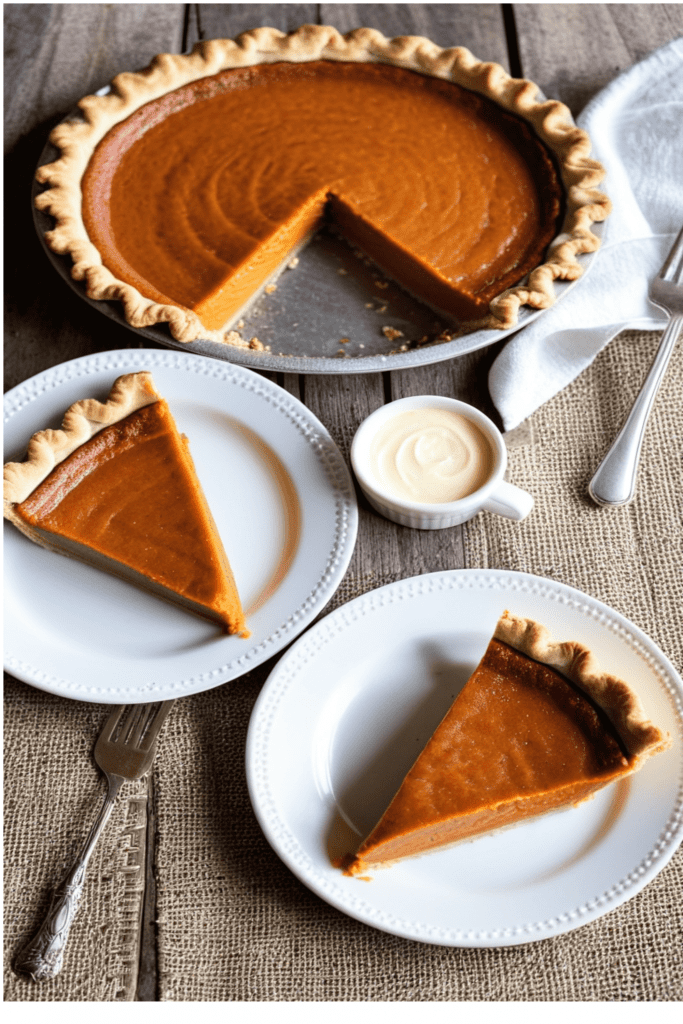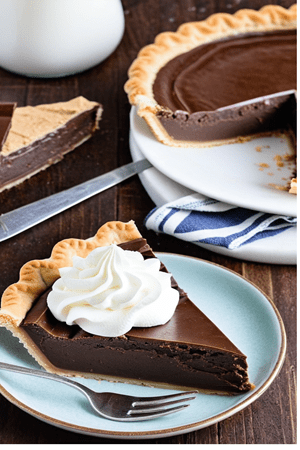In the United States, 30.3 million people live with diabetes1. Managing blood sugar levels is a daily challenge. Yet, understanding glycemic index and carbohydrate counting can make diabetic-friendly desserts possible.
The glycemic index (GI) measures how quickly a food raises blood sugar levels. High GI foods, like processed snacks and desserts, cause rapid spikes in blood glucose2. On the other hand, low GI foods, including many vegetables and whole grains, release glucose more slowly, stabilizing blood sugar2.
Carbohydrate counting is crucial for diabetes management. Carbohydrates yield four calories of energy per gram, with a standard serving size of 15 grams2. While there’s no universal carbohydrate prescription, each person’s needs may vary2. Non-starchy vegetables contain only 5 g of carbohydrates per serving, allowing for three times more consumption than starchy vegetables1.
By combining glycemic index and carbohydrate counting, people with diabetes can create delicious, low GI desserts. These desserts can fit within daily carbohydrate goals. With mindful ingredient choices and proper portion control, diabetic-friendly desserts can be a satisfying part of a balanced diet.
The Importance of Managing Blood Sugar Levels
For those with diabetes, managing blood sugar levels is essential to avoid severe health issues. Uncontrolled blood sugar can cause nerve damage, vision loss, and heart disease3. A well-balanced diet is crucial for blood sugar control and effective diabetes management.
Knowing the Glycemic Index (GI) helps diabetic patients choose better foods. The GI scores carbs from 0 to 100 based on their blood sugar impact4. Foods with a high GI (70 or higher) quickly raise blood glucose. In contrast, low GI foods (55 or less) slowly increase blood sugar, making them ideal for diabetics4.

Carb content in food greatly affects blood sugar, with desserts typically having 30-60 grams per serving3. Controlling portions can cut caloric intake by 20-30%, aiding in better blood sugar control3. Using natural sweeteners and real fruit in desserts can lower carb intake by 10-20%, reducing glycemic load3.
Combining regular exercise with balanced dessert consumption can improve insulin sensitivity in type 2 diabetes by up to 30%3. Exercise enhances blood sugar management over time4. Portion-controlled desserts help maintain stable blood sugar, with studies showing a 15-20% reduction in glucose levels compared to larger portions3.
“Mindful eating and portion control are key to enjoying desserts while effectively managing blood sugar levels.”
By choosing smart ingredients and practicing portion control, diabetics can enjoy desserts without harming their blood sugar control. Selecting sugar-free desserts with 0-5 grams of sugar and considering fat and carb content can prevent hyperglycemia and hypoglycemia3.
Glycemic Index (GI) and Carbohydrate Counting
Managing blood sugar levels is crucial, and two tools can help: the glycemic index (GI) and carbohydrate counting. The GI ranks foods by how quickly they raise blood sugar, with lower GI foods being better for blood sugar control5. Knowing the GI of different foods helps you make choices that keep your blood sugar stable.
Carbohydrate counting focuses on the carbs in each meal or snack. Carbs directly affect blood sugar, making counting carbs key for diabetes management5. With over 37 million Americans living with diabetes, effective carb management is vital5.

Plan your meals to include 50% non-starchy veggies, which are low in carbs and high in fiber5. Starchy carbs, like whole grains and fruits, should be about 25% of your plate5. Each serving of starchy carbs has about 15 grams of carbs5. Aim for 45-60 grams of carbs per meal for diabetes management5.
Using the glycemic index and carbohydrate counting together is a powerful strategy for blood sugar management. Low GI foods help keep glucose levels stable, while monitoring carbohydrate intake prevents overloading. This method is especially useful for desserts, as shown in this low-carb Valentine’s dessert recipe that uses strawberries and other diabetes-friendly ingredients.
The estimated average blood glucose target range for people with diabetes is often between 70-130 mg/dL before meals, depending on individual health conditions5.
Understanding the glycemic load of foods and using carbohydrate counting methods can help control blood sugar levels. This can reduce diabetes complications. Research shows a potential 1% reduction in HbA1c levels (a measure of long-term blood glucose control) with effective carb management5. So, try out low GI, carb-counted recipes for better health!
Understanding Glycemic Index
The glycemic index (GI) is crucial for managing blood sugar, especially for those with diabetes or prediabetes. It ranks foods based on their effect on blood glucose, with pure glucose at 1006. Knowing the GI helps you choose foods wisely to control your blood sugar.

What is the Glycemic Index?
The glycemic index measures how quickly a food raises blood sugar compared to pure glucose. Foods are categorized as low (55 or less), intermediate (55-70), or high (70 or higher) on the GI scale6. For example, unripe green bananas have a GI of 42, while ripe bananas have a GI of around 626.
How the Glycemic Index of Foods is Measured
The GI of a food is determined by measuring blood glucose after eating a portion with 50 grams of carbs. This glucose response is compared to pure glucose. The GI ranking started in Canada in the 1980s and became popular worldwide in the 2000s6.
Impact of GI on Blood Sugar Levels
Eating low GI foods can greatly improve blood sugar control. A Cochrane review of 11 trials showed a low GI diet lowered Hg A1C by 0.5% for diabetes patients6. A 2014 review also found low GI foods may have anti-inflammatory effects, aiding in blood sugar management6.
Pairing a high-sugar dessert with a protein or fiber source can help slow sugar absorption, stabilizing blood sugar levels7.
High vs. Low GI Foods
More processed foods tend to have higher GI. For instance, white rice has a higher GI than brown rice due to processing6. Instant oatmeal has the highest GI compared to quick oats and other oat products6. Foods with more fiber, fat, and protein, like beans and milk, have lower GI values6. The University of Sydney’s GI database helps identify GI values of various foods.
Understanding the glycemic index and making informed food choices can help manage blood sugar levels. This reduces the risk of diabetes complications. Use the GI database and consult with your healthcare provider to create a meal plan with low GI foods for better insulin response and health.
Carbohydrate Counting
Managing blood sugar levels requires a solid grasp of carbohydrate counting. Understanding the carbohydrate content in your diet helps control blood glucose. Reading nutrition labels is crucial, as it reveals carb amounts in each serving.
Carb counting involves tracking carbs in each meal and snack. A standard carb serving is about 15 grams. A balanced meal plan should include 3 to 5 carb servings at meals and 1 to 2 at snacks8. Monitoring portion sizes and carb intake helps manage blood sugar levels.

Why is Carbohydrate Counting Important?
Carb counting is vital for blood sugar management. Carbs significantly impact blood glucose levels. When carbs are broken down, they become sugar, raising blood sugar levels. Counting carbs ensures the right amount is consumed, keeping blood sugar in check.
“Carbohydrate counting is like a secret weapon in the fight against high blood sugar. It empowers you to make informed choices about what you eat and how it affects your body.”
How to Count Carbohydrates
To effectively count carbs, start with nutrition labels on food packages. Look for the “Total Carbohydrate” line, which includes sugars and dietary fiber. A balanced diet should focus on carbs from fruits, vegetables, whole grains, and milk products8. Aim for a variety of nutrient-dense carb sources for essential vitamins, minerals, and fiber.
When cooking, use measuring cups and a food scale for accurate portion sizes. Guides or apps can also help estimate carb content in various foods. Consistency and finding a method that suits you are key to success9.
Combining Glycemic Index and Carbohydrate Counting
Managing blood sugar levels and maintaining a balanced diet can be achieved by combining glycemic index (GI) and carbohydrate counting. Understanding how these methods work together allows for better food choices. This, in turn, impacts your blood sugar stability positively.

Carbohydrate counting involves tracking carbs in meals and snacks, aiming for 30—75 grams per meal and 15—30 grams per snack10. Each carb choice equals 15 grams, with 2—5 choices per meal and 1—2 for snacks10. This method is crucial for managing blood glucose levels, as carbs are the main contributor to glucose response11.
The glycemic index ranks carbs from 0 to 100 based on their blood sugar impact, with pure glucose at 10010. Foods with a GI of 70 or higher are high, 56—69 are medium, and 55 or lower are low10. Combining carbohydrate counting with glycemic index awareness helps create balanced meals for better blood sugar stability.
Benefits of Using Both GI and Carbohydrate Counting
Using both methods controls carb quantity and quality, impacting blood sugar less harshly. Higher fiber carbs cause a more gradual glucose rise11. Combining carbs with protein and fat matches glucose rise to insulin response11.
“Being mindful of both the quantity and quality of the carbohydrates you eat is key to maintaining balanced blood sugar levels throughout the day.”
How They Complement Each Other
Carbohydrate counting manages portion sizes, while glycemic index guides to blood sugar-friendly foods. Together, they offer a comprehensive approach to mindful eating for health and well-being. Choosing low-GI foods and controlling portions allows for a variety of nourishing foods while keeping blood sugar in check.
Practical Tips for Combining GI and Carbohydrate Counting
Some practical tips for using both strategies together include:
- Choosing wholegrains over refined carbs for higher fiber and lower GI
- Combining carbs with protein and healthy fats to slow glucose absorption
- Being mindful of portion sizes, even with low-GI foods
- Experimenting with recipes that incorporate blood sugar-friendly ingredients
By applying these tips and being mindful of carb quantity and quality, you can create balanced meals. These meals support blood sugar stability and overall health. With creativity and experimentation, eating for blood sugar management can be both enjoyable and nourishing.
Applying GI and Carbohydrate Counting to Diabetic Dessert Making
Making desserts for diabetics is a delicate art, balancing taste with blood sugar control. Traditional sweets, high in sugar and carbs, can quickly raise blood glucose12. Yet, with the right ingredients and portion sizes, it’s possible to create treats that are both tasty and healthy.
Understanding the carbohydrate needs of diabetics is key. A registered dietitian or CDCES can tailor a diet plan based on body size, activity, and hunger12. Tracking food and blood glucose levels before and after meals offers insights into how different foods affect blood sugar12.

Using low glycemic index (GI) ingredients is a smart strategy for diabetic desserts. Foods like whole grains, fruits, and sugar substitutes release glucose slowly, keeping blood sugar stable. Adding fiber-rich ingredients like fruits and whole grains boosts nutrition and satiety13.
Portion Control and Sugar Alternatives
Controlling portion sizes is crucial in diabetic dessert making. The Diabetes Plate Method suggests limiting certain foods to a quarter of the plate12. This approach helps enjoy desserts without overdoing carbs. Serving sizes for diabetic desserts can vary, ranging from 8 servings for a ginger plum tart to 64 servings for an angel food cake14.
Sugar substitutes are vital in diabetic dessert recipes, appearing in about one-third of them14. They allow for sweet treats with less impact on blood sugar. The ADA recommends replacing sugary drinks with water or low-calorie options to manage blood sugar and reduce disease risk13.
By focusing on low GI ingredients, portion control, and sugar alternatives, individuals with diabetes can still indulge in delicious desserts without compromising their health goals.
Sample Dessert Recipes
Enjoying a sweet treat doesn’t have to ruin your healthy eating plans. With a collection of diabetic dessert recipes at your disposal, you can satisfy your sweet tooth without worrying about blood sugar spikes. These low carb desserts and sugar-free desserts are designed to curb cravings while keeping your health in check. Each recipe provides glycemic index and carbohydrate count per serving, helping you make smart choices.
This selection of diabetic dessert recipes offers 23 options, all diabetes-friendly15. They focus on complex carbs and whole grains for better health15. Some recipes even use egg whites for gluten-free cookies, making them light and fluffy15.

Choosing the right ingredients is key for low carb desserts. These can significantly lower insulin response compared to high-carb desserts16. Options like dark chocolate, fresh berries with heavy cream, and sugar-free Jello offer sweet treats without the sugar rush16.
“I love finding ways to enjoy my favorite desserts while still keeping my blood sugar stable. These recipes prove that with a few smart swaps, you can have your cake and eat it too!”
Remember, even sugar-free desserts should be enjoyed in moderation. The featured recipes offer a range of servings, from 12 to 64, and some are perfect for individual treats17. At least 10 recipes are specifically designed for diabetics or are low in sugar, using substitutes and low-fat ingredients17.
Explore this collection of diabetic dessert recipes and discover how to indulge in sweet treats without sacrificing your health goals. With creativity and the right ingredients, you’ll create low carb desserts and sugar-free desserts that everyone will enjoy.
Recipe 1: Low GI Chocolate Cake
Indulge in a delightful treat without compromising your blood sugar levels with this delectable low GI chocolate cake. Crafted with almond flour and sweetened with natural alternatives, this cake is a perfect example of how you can enjoy a sugar-free chocolate cake that’s both delicious and diabetic-friendly18.
Ingredients
This recipe calls for just 7 ingredients, making it a simple and convenient option for those looking to create a healthier dessert19. The star ingredient, almond flour, is a low-carb, high-fiber alternative to traditional wheat flour, contributing to a reduced diabetic carb count18. The cake also includes 1 ½ cups of fine almond flour and 1/3 cup of granulated erythritol or regular sugar, which is approximately 67% lower than traditional chocolate cake recipes19.

Instructions
Preparing this low GI chocolate cake is a breeze, with a total cook time of just 14 minutes19. The baking temperature is set at 350°F, and the recipe yields 8 servings19. For those looking to create a double layer cake, simply double the recipe and bake in two 8-inch pans19.
As you craft this sugar-free chocolate cake, keep in mind that using xylitol as a 1:1 sugar replacement significantly lowers the sugar content compared to refined sugars18. Additionally, opting for high cocoa content chocolate (70% or above) further decreases the overall sugar levels in the cake18.
GI and Carbohydrate Count per Serving
One of the key benefits of this low GI chocolate cake is its gentle effect on blood sugar levels. By utilizing ingredients with a lower glycemic index (GI), the cake is digested and absorbed more slowly, resulting in a steadier glucose release into the bloodstream18. This recipe contains 160g of gluten-free plain flour, which accounts for 128g of carbohydrates in a double-layer cake18.
This low-sugar chocolate cake reduces the margin for insulin errors for those monitoring blood sugar levels18.
Embrace the joy of indulging in a stevia-sweetened dessert that not only satisfies your sweet tooth but also supports your diabetes management goals. With this low GI chocolate cake, you can have your cake and eat it too!
Recipe 2: Berry Yogurt Parfait
Seeking a dessert that’s both delicious and won’t raise your blood sugar? This low carb parfait with Greek yogurt and sugar-free berry compote is your answer. It’s not just tasty; it’s also a nutrient-rich option for managing blood glucose levels.

Yogurt with live cultures can lower HbA1c, a key indicator of blood sugar control20. Greek yogurt, being high in protein, aids in blood sugar regulation, with a typical serving size of about 280 grams (or 1 cup)20. Adding berries and granola, which are rich in fiber, can further stabilize blood sugar spikes after meals20.
Ingredients
To craft this delightful parfait, gather:
– 12 ounces of yogurt (preferably Greek for its protein content)
– 1/4 cup of sugar substitute or your preferred sweetener
– 1/4 cup of granola (either store-bought or homemade)
– 1 cup of sliced strawberries
– 1/2 cup of fresh blueberries21
Berries are perfect for blood sugar management, being low in calories and carbs but high in antioxidants. This recipe uses 1.5 cups of berries, offering 46 mg of vitamin C per serving21.
Instructions
To build your parfait:
1. Mix the yogurt with your chosen sweetener until smooth.
2. Layer the yogurt mixture, granola, and berries in a glass or jar, alternating until all ingredients are used.
3. Serve immediately and enjoy your healthy dessert!
This parfait recipe serves 2 and is ready in just 15 minutes21. Feel free to add your favorite fruits or try different yogurt flavors to keep it exciting.
GI and Carbohydrate Count per Serving
Each serving of this parfait has:
– 312 kcal
– 52 g of total carbohydrates
– 20 g of protein
– 4 g of fat
– 1 g of saturated fat
– 9 mg of cholesterol
– 68 mg of sodium
– 438 mg of potassium
– 3 g of dietary fiber
– 41 g of total sugar21
Though the total sugar might seem high, most of it comes from natural sources in the yogurt and berries. The granola, with its whole grain oat composition, helps manage blood sugar spikes20.
With this simple and nutritious berry yogurt parfait recipe, you can indulge in a sweet treat while still maintaining healthy blood sugar levels.
Conclusion
Managing blood sugar levels is key for those with diabetes, and choosing healthy desserts is part of a balanced diet. Understanding glycemic index (GI) and carbohydrate counting helps make better food choices. This keeps blood sugar stable. With obesity affecting up to 40% of the world’s population, it’s a major diabetes risk factor22.
Type-2 diabetics should limit saturated fat intake to 10% of daily calories. The ideal diet includes 55-60% carbs, 12-15% protein, and the rest from unsaturated fats23.
Trying low GI and carbohydrate-counted desserts can be both fun and healthy. The DASH and Mediterranean diets are great for diabetes management, as recommended by the American Diabetes Association22. When making diabetes-friendly recipes, use low GI ingredients like high-fiber foods. These slow down carb digestion, keeping blood sugar stable23.
Final Tips for Successful Diabetic Dessert Making
To succeed in making diabetic desserts, remember these tips. Practice portion control and pair desserts with a healthy meal plan. Eating regular meals helps control blood sugar23. Diabetes may require less carb intake, as carbs turn into sugars22. Always get advice from your healthcare provider or a registered dietitian for a personalized plan.
By using these strategies and enjoying desserts with low GI ingredients in moderation, you can manage diabetes while enjoying life’s sweetness23. Explore new recipes, try healthier ingredients, and share your creations. With creativity and mindfulness, you can enjoy desserts without compromising your health.
FAQ
What is the glycemic index and how does it relate to diabetic desserts?
The glycemic index (GI) ranks foods by how quickly they raise blood sugar. Foods with a low GI digest slowly, causing blood sugar to rise gradually. This makes them ideal for those with diabetes. By selecting low GI ingredients, diabetic desserts can help manage blood sugar while still being enjoyable.
What are some low GI ingredients I can use in diabetic desserts?
For diabetic desserts, consider almond flour, coconut flour, and whole grain flours. Berries, apples, Greek yogurt, and natural sweeteners like stevia and erythritol are also good choices. These ingredients offer a lower glycemic impact, ensuring delicious flavors and textures.
How does carbohydrate counting help with managing blood sugar levels?
Carbohydrate counting tracks carbs in each meal or snack. Since carbs significantly affect blood sugar, monitoring them is crucial. When crafting diabetic desserts, consider the carb content per serving. This helps maintain control over blood sugar levels.
Can I still enjoy desserts if I have diabetes?
Yes, you can! With careful ingredient selection and portion control, diabetic desserts are possible. Focus on low GI ingredients, sugar substitutes, and carb counts. This approach allows for delightful treats that align with your blood sugar management plan. Remember, moderation is essential.
What are some tips for making successful diabetic-friendly desserts?
For diabetic desserts, prioritize low GI ingredients and healthy fats like nuts and seeds. Incorporate fiber-rich items to slow digestion and use natural sweeteners sparingly. Also, control portion sizes and balance desserts with other nutritious foods. Experimenting with new recipes and ingredients can help you find the best options.
Source Links
- Carb counting for diabetes: How to count and use the glycemic index – https://www.medicalnewstoday.com/articles/317267
- Understanding Carbohydrates and Diabetes | Tandem Diabetes Care – https://www.tandemdiabetes.com/support/diabetes-education/managing-diabetes/understanding-carbohydrates-and-diabetes
- The Diabetic Dessert Dilemma | American Diabetes Association – https://diabetesfoodhub.org/blog/diabetic-dessert-dilemma
- Indulge Wisely: Savoring Sweets Without Spiking Your Diabetes – https://www.fasttrackurgentcare.com/indulge-wisely-savoring-sweets-without-spiking-your-diabetes/
- Carbs and Diabetes | ADA – https://diabetes.org/food-nutrition/understanding-carbs
- Understanding Glycemic Index for Better Health – https://www.healthcastle.com/what-is-glycemic-index-gi/
- Can You Eat Dessert If You Have Diabetes? – https://www.eatingwell.com/article/8043110/can-people-with-diabetes-eat-dessert/
- Microsoft Word – CarbohydrateCounting_FINAL – https://stanfordhealthcare.org/content/dam/SHC/treatments/h/docs/hearttransplant-pdf-carbohydratecounting.pdf
- 81 Diabetic-Friendly Desserts – https://www.tasteofhome.com/collection/diabetic-desserts/?srsltid=AfmBOopHo0XFAVEGYV792kFZHYET3wbn-6hkjTxMu3K12qyE6T0aJM8E
- Carbohydrate Counting, Glycemic Index, Glycemic Load – Exercise & Nutrition for Diabetics | Diabetes Self-Management – https://www.diabetesselfmanagement.com/nutrition-exercise/meal-planning/carbohydrate-counting-glycemic-index-and-glycemic-load-putting-them-all-together/
- 20 Diabetes-Friendly Desserts That Everyone Will Love – https://www.marthastewart.com/1504397/diabetes-friendly-desserts
- Carb Counter and Diabetes | ADA – https://diabetes.org/food-nutrition/understanding-carbs/carb-counting-and-diabetes
- Dietary Advice For Individuals with Diabetes – Endotext – https://www.ncbi.nlm.nih.gov/books/NBK279012/
- 81 Diabetic-Friendly Desserts – https://www.tasteofhome.com/collection/diabetic-desserts/?srsltid=AfmBOoryk0JxAXVKs5QCvURqzZIRP2_As74_Hf4CUL3IlKxsDTGiVn0-
- 23 Diabetes-Friendly Desserts You’ll Want to Make Forever – https://www.eatingwell.com/gallery/7933746/diabetes-friendly-desserts-to-make-forever/
- Diabetes-Friendly Dessert Recipes – https://www.virtahealth.com/blog/diabetic-desserts
- 81 Diabetic-Friendly Desserts – https://www.tasteofhome.com/collection/diabetic-desserts/?srsltid=AfmBOoqPdjnlqIjVTieXUHYt1iUgUBdugdECGaqEr0Ke_zxFqmSUgBaT
- Low Sugar Almond Flour Chocolate Cake (Diabetic-Friendly & Gluten-Free) – https://www.wholeheartykitchen.co.uk/almond-flour-chocolate-cake/
- Keto Cake – The BEST Chocolate Recipe! – https://chocolatecoveredkatie.com/keto-cake-recipe/
- 6 Filling Parfaits That Won’t Spike Your Blood Sugar – https://www.healthline.com/nutrition/6-filling-parfaits-that-wont-spike-your-blood-sugar
- Strawberry Blueberry Yogurt Parfaits – Flavor Mosaic – https://flavormosaic.com/strawberry-blueberry-yogurt-parfaits/
- Healthy Diabetic Desserts – secret to happiness | Klinio Blog – https://klinio.com/blog/diabetic-desserts/
- Diabetes And Desserts? Can The Two Really Meet? 🤔 – https://www.artinci.com/blogs/news/diabetes-and-desserts-can-the-two-really-meet?srsltid=AfmBOorS2TAtDqLlpHquSioLX0fHi8yjO0vBs41IJDtK7qzNI7gpSsWg













































